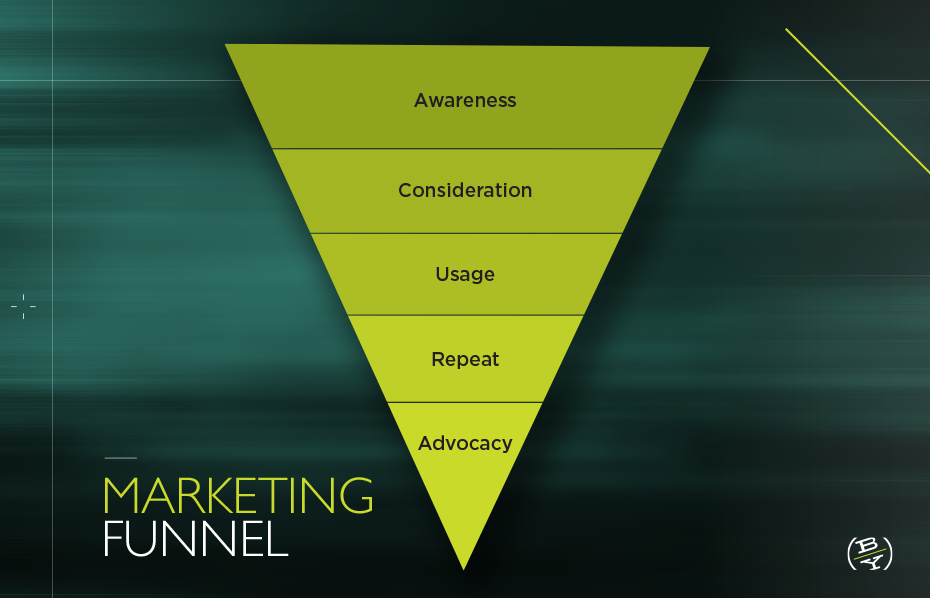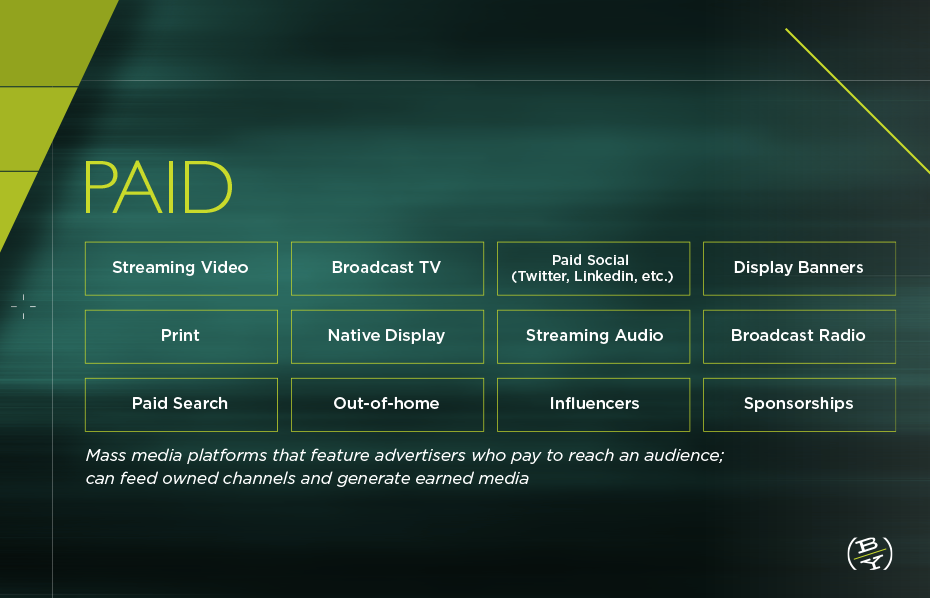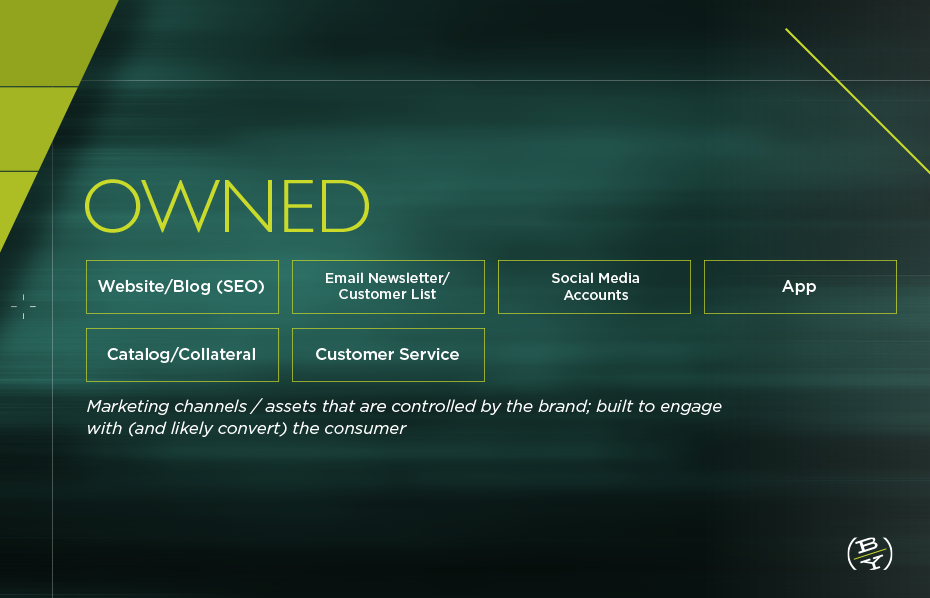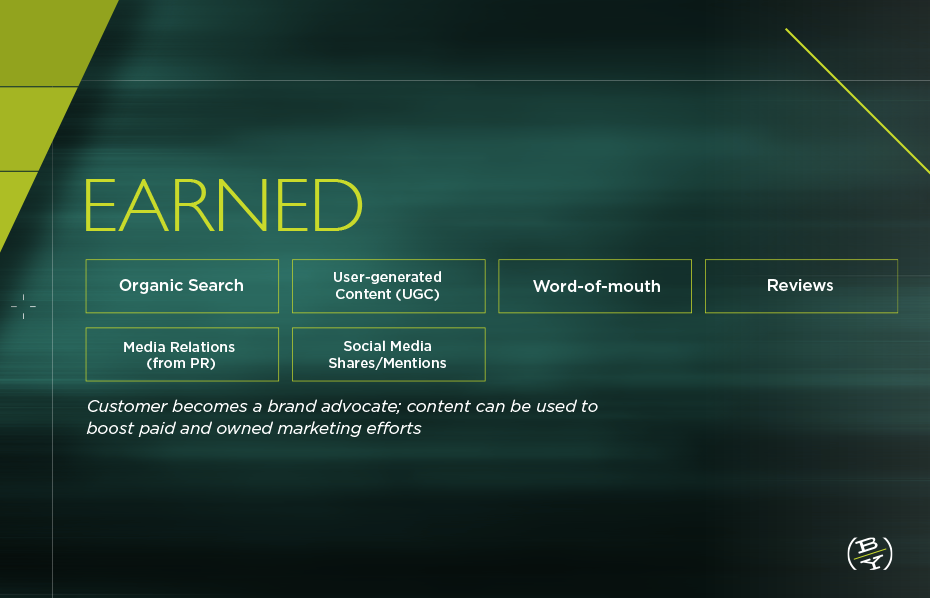In today’s market, there are seemingly endless ways to reach consumers. Print, digital, video, social media, the list goes on and on. It can leave marketers wondering which is most effective and where they should place their advertising budgets. To build a successful media strategy, we suggest thinking of the channels you’re using in relation to the marketing funnel. Then you can pair your media and message to your target audience’s stage in the buyer’s journey.
The Marketing Funnel

Let’s do a quick refresher! The marketing funnel is a common metaphor for a consumer’s interactions with a brand as they become aware of a company, learn more, make a purchase, and then recommend that brand to others.
The widest part of the funnel is the awareness stage, where a broad audience of customers starts to learn about your brand, product or service. Next is the consideration stage where the consumer will gather more information and shop around. Not everyone becomes a customer, which is why the funnel gradually gets narrower as consumers use the product or service and become repeat customers. At the bottom is the smallest group of customers who have become so loyal they turn into brand advocates and recommend you to their friends.
Types of Media
Now, let’s take a look at the types of media available to use to target consumers at each stage of the marketing funnel. Broadly, there are three types of media that you can leverage: paid, owned and earned. Let’s take a closer look at what is included in each type and which stages of the buyer’s journey they are best suited for.
Paid Media

Paid media includes all mass media platforms that allow companies to pay to advertise to an audience. This includes the types of media that consumers recognize as advertising such as broadcast TV, radio, out-of-home and print ads.
Paid channels are best leveraged to reach consumers in the awareness and consideration stages of the funnel. Consumers don’t know what they don’t know. Using paid media casts a wide net and helps get your name in front of a variety of people so they can begin to do more research about your products on their own. Additionally, your paid strategy can help feed your owned media content strategy and generate earned media if your ads are particularly buzz-worthy.
Owned Media

Owned media refers to all marketing assets that are controlled by your brand. This includes your website, blog, social media platforms and even your customer service touchpoints. All these channels are built to engage with consumers who likely already have some familiarity with your brand (through your paid media) and aims to convert them into customers. Your owned media channels can also keep your existing customers engaged in conversation with you, so they’ll become repeat customers. Therefore, these media options are used primarily to influence consumers in the consideration and usage stages of the funnel, with a touch of repeat.
Earned

Earned media is promotion or exposure that comes from sources other than your paid advertising (often, not even from your company at all). Examples include organic search, word-of-mouth, and shares and mentions on social media. This type of exposure comes after customers start interacting with your brand and are impressed with your product or service. Then they turn around and act as brand advocates. This type of media is where you interact with customers in the repeat and advocacy stages of the funnel. Plus, the earned content that customers create about your brand can often be used in owned and sometimes even paid media channels.
By finding the right blend of paid, owned and earned media, you can help new customers find you and nurture them into brand advocates. Understanding how these tactics interact with the marketing funnel helps you share the right message at the right time for the best ROI.
Need help creating the perfect media strategy for your brand? Let the B&Y team help you plan. Let’s have a conversation about strategic planning.